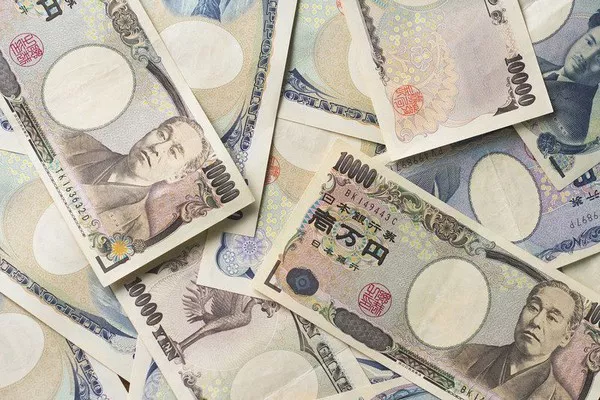In the realm of global currency markets, the Korean won (KRW) and the Japanese yen (JPY) are two significant players, each representing their respective East Asian economies. Investors and analysts often compare these currencies to assess their relative strength and potential investment opportunities. In this comprehensive analysis, we’ll delve into the factors influencing the strength of the KRW and JPY, examining their economic fundamentals, historical performance, and key drivers. By understanding the dynamics between these currencies, investors can make informed decisions when navigating the intricacies of the forex market.
Introduction to the Korean Won and Japanese Yen
The Korean won is the official currency of South Korea, symbolized as ₩, and is issued by the Bank of Korea. South Korea boasts a robust export-oriented economy, driven by leading industries such as electronics, automobiles, and shipbuilding. The strength of the won is closely tied to the country’s export performance, industrial output, and geopolitical developments on the Korean Peninsula.
On the other hand, the Japanese yen, symbolized as ¥, serves as the official currency of Japan and is issued by the Bank of Japan. Japan stands as one of the world’s largest economies, renowned for its technological innovation, manufacturing prowess, and export-oriented industries. The yen’s value is influenced by factors such as Japan’s trade balance, monetary policy decisions, and global market sentiment.
Factors Influencing the Strength of KRW and JPY
Several key factors impact the strength of the Korean won and Japanese yen:
Economic Fundamentals: Both South Korea and Japan exhibit strong economic fundamentals, including GDP growth rates, unemployment levels, inflation, and fiscal policies. Positive economic indicators typically strengthen the respective currencies, while economic downturns or instability can lead to currency depreciation.
Trade Balance: South Korea and Japan are major exporting nations, with trade surpluses contributing to currency strength. A positive trade balance, where exports exceed imports, signals robust economic performance and boosts confidence in the respective currencies.
Monetary Policy: The monetary policies pursued by the central banks of South Korea and Japan play a crucial role in determining currency values. Interest rate decisions, quantitative easing measures, and forward guidance influence investor sentiment and currency markets.
Global Market Sentiment: Both the KRW and JPY are sensitive to shifts in global market sentiment, geopolitical tensions, and risk appetite among investors. Safe-haven currencies like the yen tend to appreciate during periods of uncertainty, while risk-on sentiment may favor higher-yielding currencies like the won.
Political Stability and Geopolitical Developments: Political stability and geopolitical developments in East Asia impact investor confidence and currency markets. Tensions on the Korean Peninsula or territorial disputes in the region can affect the strength of the KRW and JPY.
Historical Performance and Trends
Examining historical performance can provide insights into the relative strength of the KRW and JPY over time:
KRW Performance: The Korean won has experienced periods of volatility, influenced by domestic and external factors. In recent years, the won has shown resilience amid global economic challenges, supported by South Korea’s export competitiveness and robust fiscal policies.
JPY Performance: The Japanese yen is renowned as a safe-haven currency, appreciated by investors during times of uncertainty. However, Japan’s prolonged economic stagnation and deflationary pressures have posed challenges for the yen’s strength in the past.
Exchange Rate Fluctuations: Exchange rate fluctuations between the KRW and JPY reflect changes in economic fundamentals, monetary policies, and market sentiment. While both currencies have exhibited relative stability compared to more volatile currencies, periodic fluctuations occur in response to macroeconomic events.
Investment Considerations
When considering investments involving the KRW and JPY, several factors merit attention:
Diversification: Including exposure to both the KRW and JPY in an investment portfolio can enhance diversification benefits, mitigating risks associated with currency fluctuations and geopolitical uncertainties.
Risk Management: Hedging strategies, such as forward contracts or options, can help manage currency risk when investing in assets denominated in KRW or JPY. Assessing risk-return profiles and implementing appropriate risk management measures is crucial for investors.
Market Analysis: Conducting thorough market analysis, including fundamental and technical analysis of the KRW/JPY exchange rate, provides insights for informed decision-making in forex trading or investment allocation.
Long-Term Outlook: Considering long-term economic trends, structural reforms, and geopolitical developments is essential when assessing the strength and potential appreciation of the KRW and JPY over time.
See Also: PHP vs. JPY: Why Is the Japanese Yen Lower?
Conclusion
The strength of the Korean won and Japanese yen is influenced by a complex interplay of economic, political, and market factors. While both currencies exhibit strengths and weaknesses, understanding their dynamics is essential for investors seeking exposure to East Asian markets or diversification in currency holdings. By analyzing historical performance, economic fundamentals, and investment considerations, investors can navigate the dynamic landscape of the forex market and make informed decisions aligned with their investment objectives and risk tolerance.


